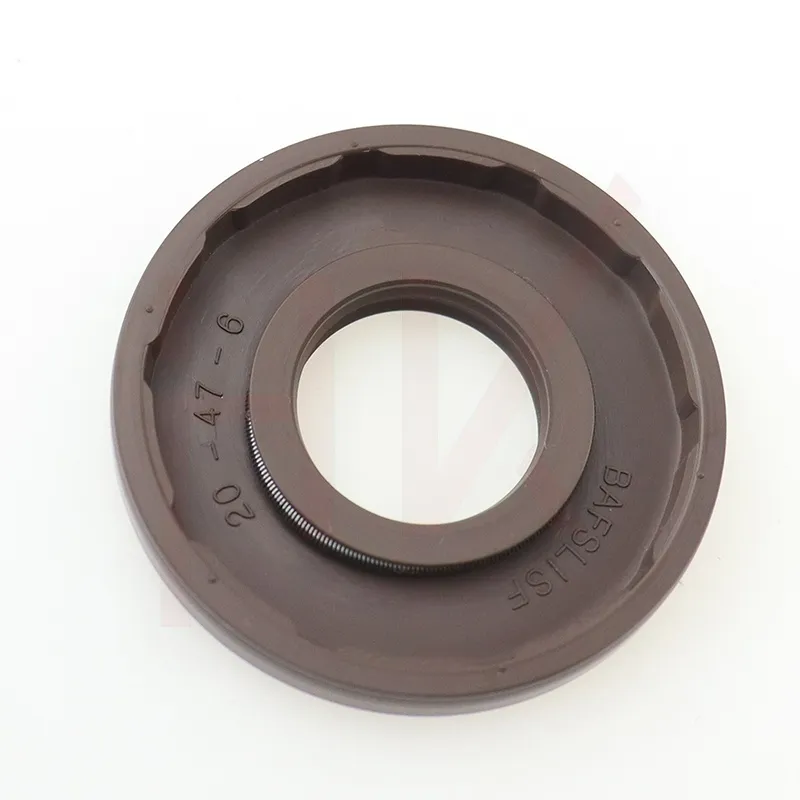Oct . 17, 2024 07:16 Back to list
Changing Seals on Hydraulic Cylinder Wipers for Improved Performance and Durability
Replacing Wiper Seal on Hydraulic Cylinder A Comprehensive Guide
Hydraulic systems are integral to many industrial and mechanical operations, providing essential power and control. One crucial component of a hydraulic cylinder is the wiper seal, also known as a scraper seal. This small yet significant part serves to prevent dirt, dust, and moisture from entering the cylinder, thereby prolonging its lifespan and ensuring efficient operation. However, over time, wiper seals can wear out or become damaged, necessitating their replacement. This article aims to guide you through the process of replacing the wiper seal on a hydraulic cylinder.
Understanding the Role of Wiper Seals
Wiper seals are positioned at the outer edge of the hydraulic cylinder and are designed to protect the internal components from contaminants. When the hydraulic rod moves in and out of the cylinder, the wiper seal scrapes off any debris that could potentially cause damage to the internal sealing components, such as the rod seals and guide rings. Thus, a fully functioning wiper seal is crucial for maintaining the efficiency and longevity of the hydraulic system.
Signs That the Wiper Seal Needs Replacement
Before embarking on the replacement process, it's important to identify the signs that indicate a wiper seal is worn out. Common indicators include
1. Leakage Hydraulic fluid leaking from the cylinder often signifies seal failure. 2. Poor Performance A decrease in the efficiency of the hydraulic system may indicate that contaminants are entering the cylinder. 3. Visible Damage Cracks, tears, or deformation of the wiper seal are clear signs that replacement is necessary.
Tools and Materials Needed
To successfully replace the wiper seal, gather the following tools and materials
- Replacement wiper seal - Hydraulic seal kit (if applicable) - Wrench set - Screwdrivers - Seal puller or sharp blade - Cleaning cloths - Lubricant (compatible with hydraulic fluid) - Safety glasses and gloves
Steps to Replace the Wiper Seal
replacing wiper seal on hydraulic cylinder

1. Safety First Begin by ensuring that the hydraulic system is depressurized. Disconnect the hydraulic line and relieve any pressure that may be present. Always wear safety goggles and gloves during the process.
2. Remove the Cylinder Carefully detach the hydraulic cylinder from its mounting. Depending on the design, this may involve unscrewing bolts or unpinning connections. Support the cylinder to avoid any damage during removal.
3. Disassemble the Cylinder Once the cylinder is removed, you will need to disassemble it to access the wiper seal. This typically involves unscrewing the end cap or gland nut. Use the appropriate wrenches to avoid damaging the threads.
4. Extract the Old Wiper Seal With the cylinder disassembled, locate the wiper seal. Using a seal puller or a sharp blade, gently pry out the old seal. Be careful not to scratch or damage the sealing surfaces of the cylinder.
5. Clean the Cylinder Before installing the new wiper seal, clean the groove where the seal sits and the surrounding areas. Use cleaning cloths to remove any debris or old lubricant. This step is crucial to ensure a proper seal and prevent contaminants from entering.
6. Install the New Wiper Seal Lubricate the new wiper seal lightly with hydraulic oil to facilitate installation. Carefully insert the seal into the groove, ensuring that it sits evenly and is not twisted.
7. Reassemble the Cylinder After the new wiper seal is in place, reattach the end cap or gland nut, tightening it to the manufacturer’s specifications. This seals the cylinder and secures the wiper seal in position.
8. Reconnect the Cylinder Finally, reattach the hydraulic cylinder to its original mounting position. Reconnect the hydraulic lines and ensure that all connections are secure.
9. Test the System Once everything is reassembled, test the hydraulic system. Monitor for any leaks around the new wiper seal and ensure the system operates smoothly.
Conclusion
Replacing the wiper seal on a hydraulic cylinder is an essential maintenance task that can significantly impact the performance and longevity of your hydraulic system. By following the outlined steps and taking necessary precautions, you can successfully replace the wiper seal, ensuring your hydraulic system continues to operate efficiently. Regular inspection and maintenance of hydraulic components, including seals, will help you avoid costly repairs and system downtime in the future.
-
Understanding Oil Seals and Their Role in Machinery Efficiency
NewsApr.08,2025
-
The Importance of Seals in Agricultural and Hydraulic Systems
NewsApr.08,2025
-
Essential Guide to Seal Kits for Efficient Machinery Maintenance
NewsApr.08,2025
-
Choosing the Right TCV Oil Seal for Your Machinery
NewsApr.08,2025
-
Choosing the Right Hydraulic Oil Seals for Reliable Performance
NewsApr.08,2025
-
A Comprehensive Guide to Oil Seals and Their Applications
NewsApr.08,2025
-
The Importance of High-Quality Oil Seals in Industrial Applications
NewsMar.26,2025
Products categories
















